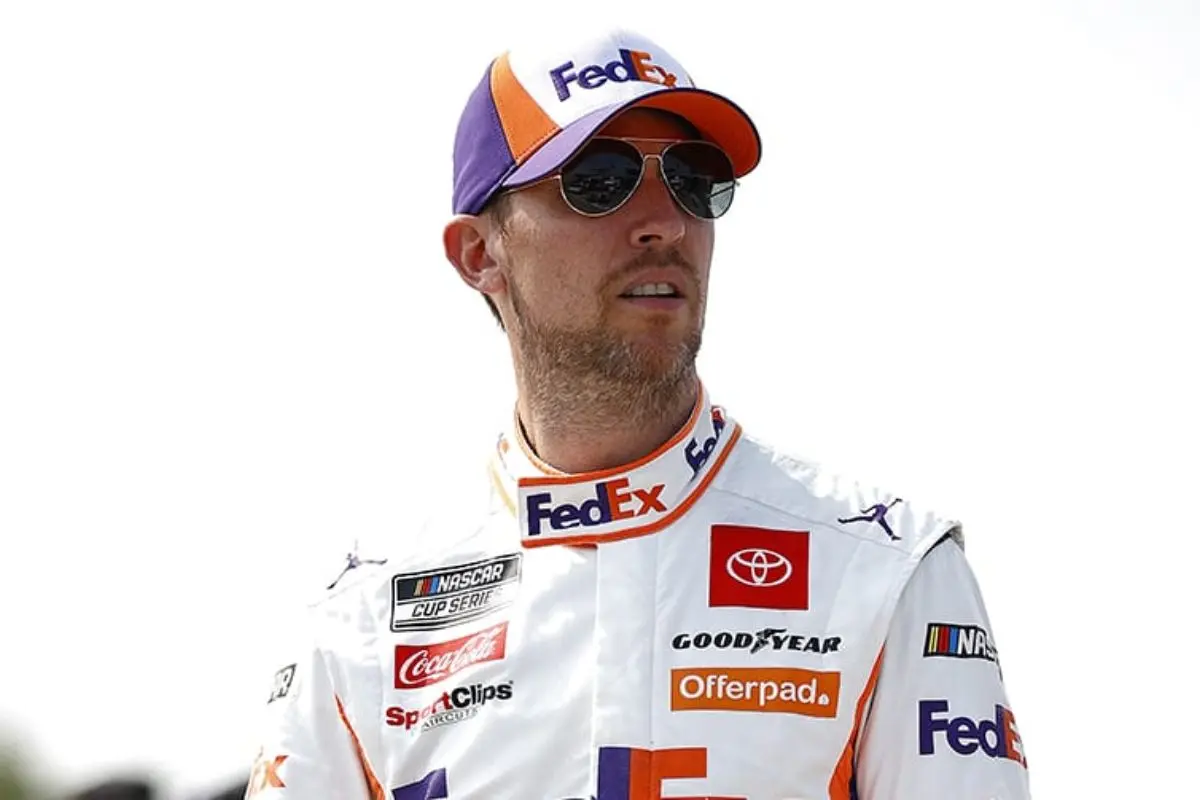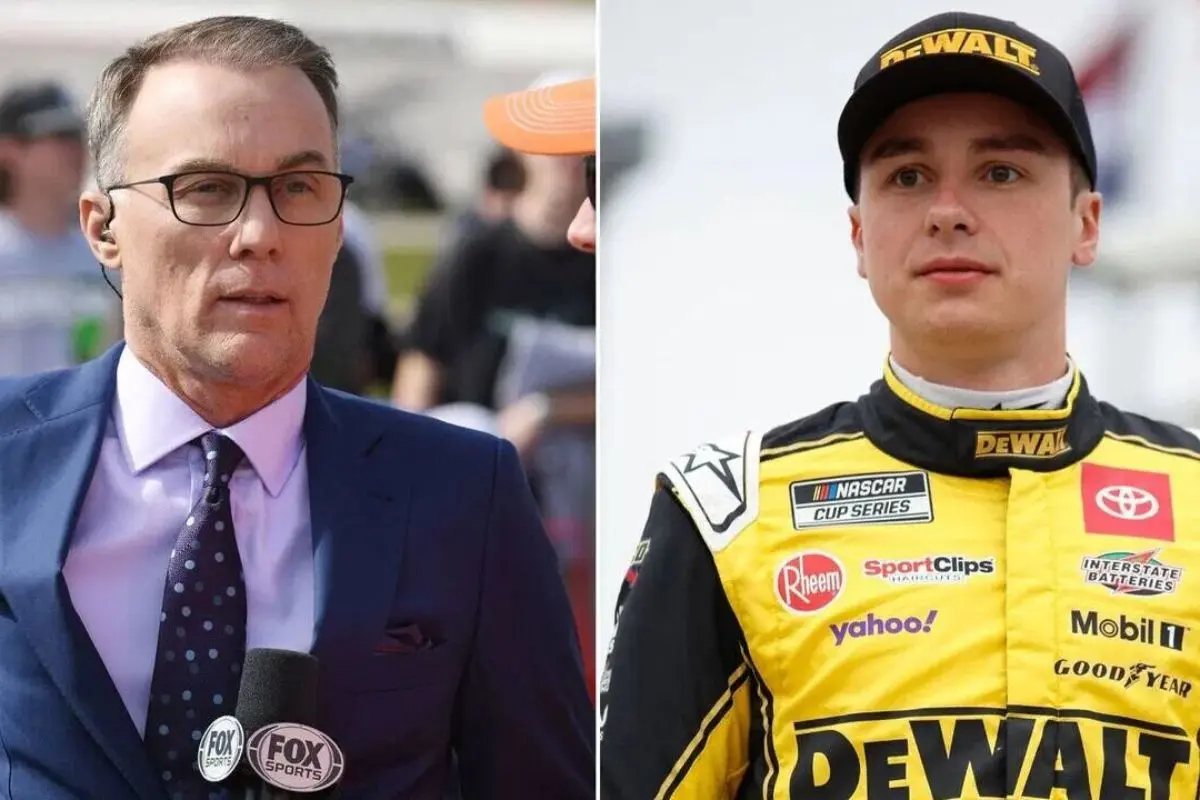Key Highlights
- Kevin Harvick questions Joe Gibbs Racing’s approach of not using team orders, which affects team success.
- Christopher Bell’s rise as a frontrunner challenges Denny Hamlin’s leadership at JGR.
- Bell’s historic wins in 2025 highlight his dominance within Joe Gibbs Racing.
- Denny Hamlin’s inability to secure a title despite his experience raises concerns about leadership.
- The leadership change with Chris Gayle as crew chief may impact Hamlin’s performance and team dynamics.
Power Dynamics Changing at Joe Gibbs Racing
As the power dynamics within Joe Gibbs Racing (JGR) undergo substantial shifts, the departure of Martin Truex Jr. marks a pivotal moment in the team’s driver hierarchy.
With Truex Jr.’s exit, Denny Hamlin and the No. 11 team were expected to assume a leading role. However, Christopher Bell, piloting the No. 20 car, has emerged as the new frontrunner, driven by his commendable results.
Bell has distinguished himself by being the only JGR driver to reach the championship race in the Next Gen era, doing so in both 2022 and 2023. Meanwhile, Hamlin, despite his experience and past success, has struggled to secure a long-awaited title, falling short in key moments.
This shift is significant as Bell’s assertive performances, highlighted by his recent race at the Desert Mile, underscore his rising influence within the team. Consequently, JGR’s internal hierarchy is evolving, with Bell as a formidable contender.

Lack of Team Orders at Joe Gibbs Racing
In the midst of the shifting power dynamics at Joe Gibbs Racing, the approach to team orders, or the lack thereof, emerges as a notable topic. Joe Gibbs Racing, adhering to a philosophy of individual competition, refrains from imposing team orders, as evidenced by Christopher Bell’s narrow victory over Denny Hamlin at Phoenix.
This tactic cultivates a fierce competitive spirit among teammates, pushing each to their limits. However, it simultaneously presents a tactical challenge, particularly impacting Hamlin, who remains winless this season and faces difficulties securing a playoff spot.
ANOTHER PHOTO FINISH AT PHOENIX!
Christopher Bell holds off Denny Hamlin and beats him to the finish line to get his third win in a row! pic.twitter.com/gyrSibKFSk
— Steven Taranto (@STaranto92) March 9, 2025
The absence of team orders at JGR highlights a broader issue, where tactical opportunities are potentially missed. Bell’s triumph, while reinforcing his leadership and contention for the championship, emphasizes the cost of an individualistic approach.
Kevin Harvick’s insights on this matter, shared during the Happy Hour Podcast, further illuminate JGR’s distinctive operational philosophy, questioning its implications on team success and dynamics.
“I asked him about that on the victory lap. I said, are there any team orders or is there anything that you guys talk about? And he really made it sound like they don’t even really ever talk about it. And everybody is instructed to go out there and race for themselves.” – Kevin Harvick
Denny Hamlin’s Surprising Reaction to the Finish
Denny Hamlin’s surprising reaction to the finish at Phoenix Raceway offers a notable moment of introspection and strategy evaluation. Contrary to his usual competitive demeanor, Hamlin chose not to retaliate when Christopher Bell nudged his No. 11 car into the wall during the final lap. This restraint deviates from his previous aggressive battles with competitors like Kyle Larson and Chase Elliott. Instead, Hamlin admitted, “I’m more mad at myself than anything,” indicating a personal reflection on his performance rather than focusing on external factors.
This dynamic brings to light the cultural norms within Joe Gibbs Racing (JGR), where intra-team competition has historically been fierce. This environment encourages fierce competition among JGR teammates, distinctively different from other teams.

Christopher Bell’s Historic Rise in NASCAR
Kevin Harvick’s reflections on the evolving dynamics at Joe Gibbs Racing (JGR) naturally lead to a focus on Christopher Bell’s remarkable ascent in NASCAR.
Bell’s historic rise during the 2025 season has been characterized by his extraordinary achievement of winning three consecutive races at Atlanta, Circuit of the Americas, and Phoenix. This feat places him among an exclusive group of only 29 drivers in NASCAR history, and he is particularly the initial to accomplish this in the Next-Gen era.
Bell’s consistent performances have not only solidified his status as one of the sport’s elite drivers but also prompted discussions about his emerging leadership role within JGR.
Harvick’s observations highlight how Bell’s rise has reshaped perceptions of team hierarchy, especially as Denny Hamlin appears to have shifted to a subordinate position.
“And we’ve seen that through the years. We’ve seen Carl Edwards knock Kyle Busch out of the way. We’ve seen some of those Gibbs cars get into each other. And I believe that is the Gibbs culture. I want you to be the best you can be and not worry about that guy because he’s your, he’s your teammate”. – Kevin Harvick
These developments suggest a groundbreaking period for JGR, with Bell potentially guiding the team’s future successes.
The Future of Joe Gibbs Racing’s Leadership
As the leadership landscape at Joe Gibbs Racing (JGR) undergoes considerable alteration, the departure of Chris Gabehart from the #11 team’s helm marks a crucial shift.
The reallocation of roles has seen Chris Gayle assuming the position of crew chief, a tactical move that aligns with Coach Gibbs’ vision for the team’s future. This change is notable given Gabehart’s previous influence in guiding Denny Hamlin’s pursuit of championship success.
The future of JGR’s leadership hinges on several key factors:
- Adaptation to New Roles: Chris Gayle’s effectiveness in steering the #11 team will be closely monitored.
- Internal Dynamics: The emergence of Christopher Bell as a formidable contender may influence team interactions.
- Performance of New Additions: Chase Briscoe’s integration into the No. 19 team remains a crucial focus.
- Tactical Direction: Coach Gibbs’ overarching strategy will determine the path of JGR’s competitive edge.
“Where’s [Christopher] Bell at as the team leader at JGR? Because it surely seems to be developing into the Christopher Bell leadership role, and being kind of that lead-driver…I mean, it’s not the No. 54, and it’s not the No. 19. Denny’s whole scenario has changed…So, with the performance and the continuity and everything being consistent for that No. 20 team, it just seems like as they go forward, they have found a new leader of their team, for when Denny Hamlin is not at JGR anymore.” – Kevin Harvick

News in Brief: Kevin Harvick Calls Out JGR’s Leadership
The evolving dynamics at Joe Gibbs Racing highlight a notable shift in leadership roles, as Christopher Bell’s ascendancy potentially redefines team strategy. Kevin Harvick’s critique emphasizes the absence of clear team orders, raising questions about internal unity.
Denny Hamlin’s reaction to recent events suggests an adjustment period, while Bell’s success marks a crucial moment in NASCAR. As these changes unfold, the team’s future will depend on how effectively it navigates these leadership changes and adapts to new competitive realities.
ALSO READ: Kevin Harvick’s Bold Take on Atlanta Puts Daytona in the Shadows!

